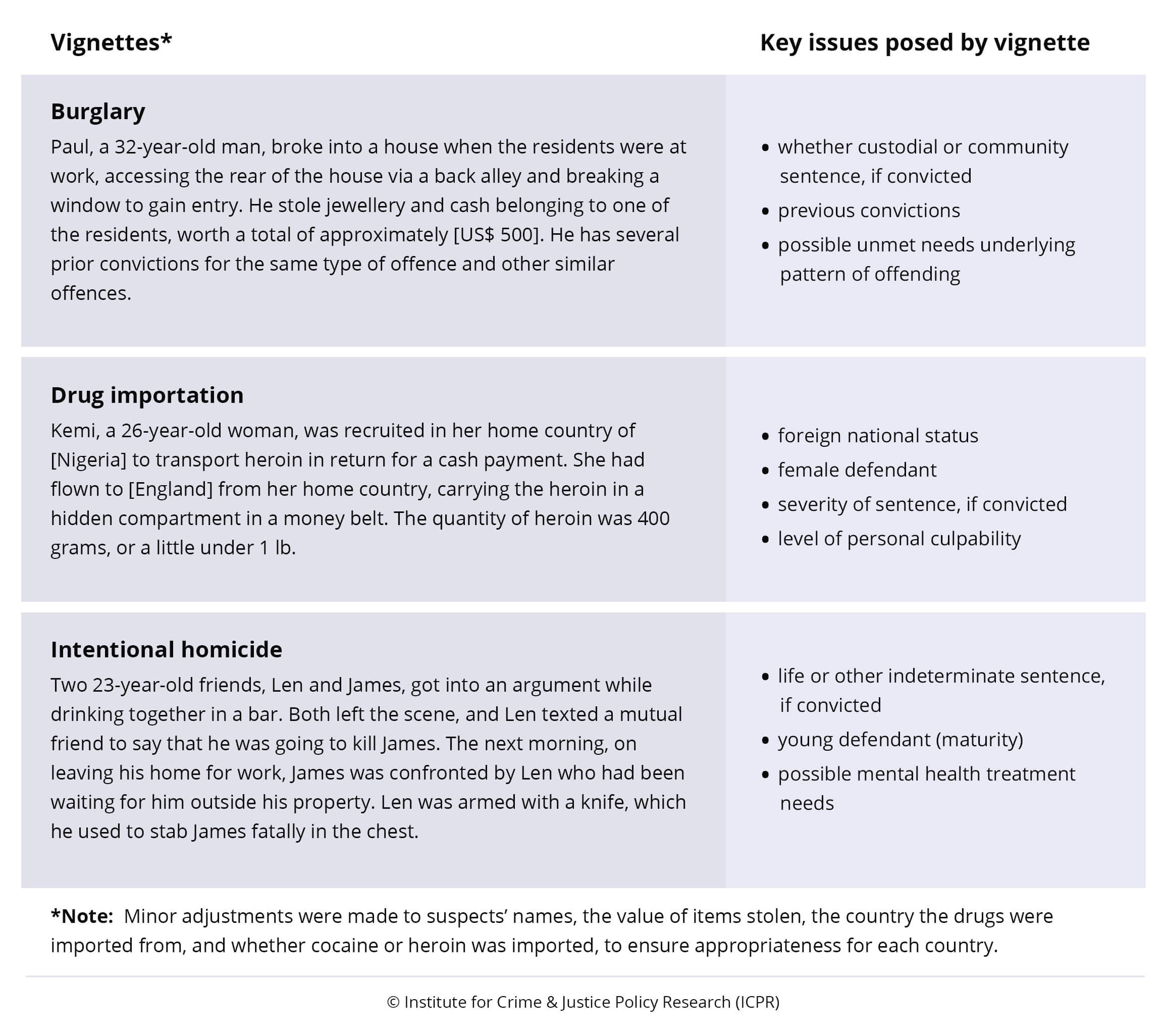Read this page in French, Portuguese, Spanish
How we chose the ten countries
In selecting ten jurisdictions for study in this project, we had in mind our overall aim of drawing transferable lessons on how to reduce resort to imprisonment from disparate circumstances and policy approaches. To this end, the ten jurisdictions were selected on the basis of their geographic spread, their regional or global influence, and their diversity in terms of economic prosperity, legal systems, and prison population rates and trends. The availability of criminal justice data and of research and policy partners in each jurisdiction was another consideration.
Working with in-country partners
A core aspect of the project was the forging of links with academics, practitioners and civil society organizations in the ten countries to ensure that we could obtain a full picture of what was happening on the ground in prisons and wider criminal justice systems. In return we hoped that our research could be used by those individuals and organizations to promote positive change at national and regional levels.
During the course of the project we have worked with over fifty NGOs and practitioner organizations involved in criminal justice reform.
In the latter stages of the project we worked closely with Prison Insider on research activities relating to COVID-19 in prisons in the ten countries, and on disseminating project findings and reform recommendations across a wide range of themes, as set out below.
Themes
The work of the project has been structured around five themes, as set out below.
The use and over-use of imprisonment in ten countries
This theme focuses on the causes and consequences of prison population change by examining recent patterns of imprisonment in each of the ten countries, and analysing the extent to which imprisonment is used as a tool of penal policy pre-trial and at sentencing. The work draws heavily on data held on ICPR’s World Prison Brief website to track the changes in prison population numbers in the ten countries over previous decades, complemented by desk research to analyse the key developments in each of the ten countries’ use of imprisonment in recent decades.
Pre-trial justice
Work under this theme examines the global increase in numbers of people held in pre-trial detention in recent decades, analysing this in detail across the ten countries. A key objective is to understand why pre-trial detainee populations are as large as they are in so many countries – in some cases at record high levels, despite the increase in available alternatives to pre-trial detention. The research considers causes and consequences of excessive use of pre-trial custody across a range of legal systems, and sets out recommendations for reform.
To provide a suitable framework for research and analysis, we examined pre-trial decision making by reference to three hypothetical cases: one involving a burglary by someone with several previous convictions; another, a drug importation by a woman from a less developed country; the third, an intentional homicide. (These vignettes are set out in full under ‘Sentencing’ below.) We conducted legal and policy reviews and empirical research, with input from a range of partners including legal and other practitioners and NGOs. The following main sources of information are drawn upon in our report and recommendations:
- Pre-trial detention statistics held on ICPR’s World Prison Brief database
- Analyses of the legal framework governing pre-trial decision-making in the ten countries
- Semi-structured interviews with sixty experienced criminal defence lawyers across the ten countries.
Sentencing
The purpose of our work under this theme is to highlight disparities between the jurisdictions in their approaches to custodial sentencing, and to consider the implications of these disparities for penal reform at global, regional and national levels. Our research examined sentencing law, policy and practice across the ten countries, again by reference to three hypothetical offences or ‘vignettes’

Our report and recommendations draw on two main sources: an analysis of the legal and policy frameworks which govern the sentencing of offences such as those depicted in the three vignettes; and semi-structured interviews with 70 experienced criminal law practitioners across the ten countries about how, in their professional experience, these offences are likely to be sentenced in practice.
Prisons and health
This work aims to provoke fresh consideration of the health risks associated with the over-use of imprisonment and to explain why addressing them should be regarded as both a health and a justice policy priority.
Several of the problems and interventions explored in this research were the subject of papers presented at an international conference we held in November 2018 at Birkbeck, University of London, Mapping inequalities in prisoner healthcare worldwide. The work is also informed by material about prisoners’ lived custodial experience in several of the ten countries, drawn from interviews that we and our partners conducted with prisoners and former prisoners over the course of the project.
COVID-19 and prisons
In two reports on COVID-19, we assess the measures taken by prison systems in response to the pandemic, and the impact on prisoners’ lives.
After the global COVID-19 pandemic was declared on 11 March 2020 we rapidly reviewed the measures being taken by prisons around the world to contain the risk of COVID-19 spreading within and beyond their walls. With our research partner Prison Insider, we conducted interviews with expert informants – that is, individuals working in academia or in human rights and penal reform organizations who had specialist knowledge of prisons – in each of the ten countries. We also reviewed policy documents, published research, and relevant media reports.
In addition, we explored how life in custody has changed as a result of the global health emergency, by drawing from over 80 interviews with prisoners, ex-prisoners and their loved ones, which we and our research partners conducted before and during the pandemic.